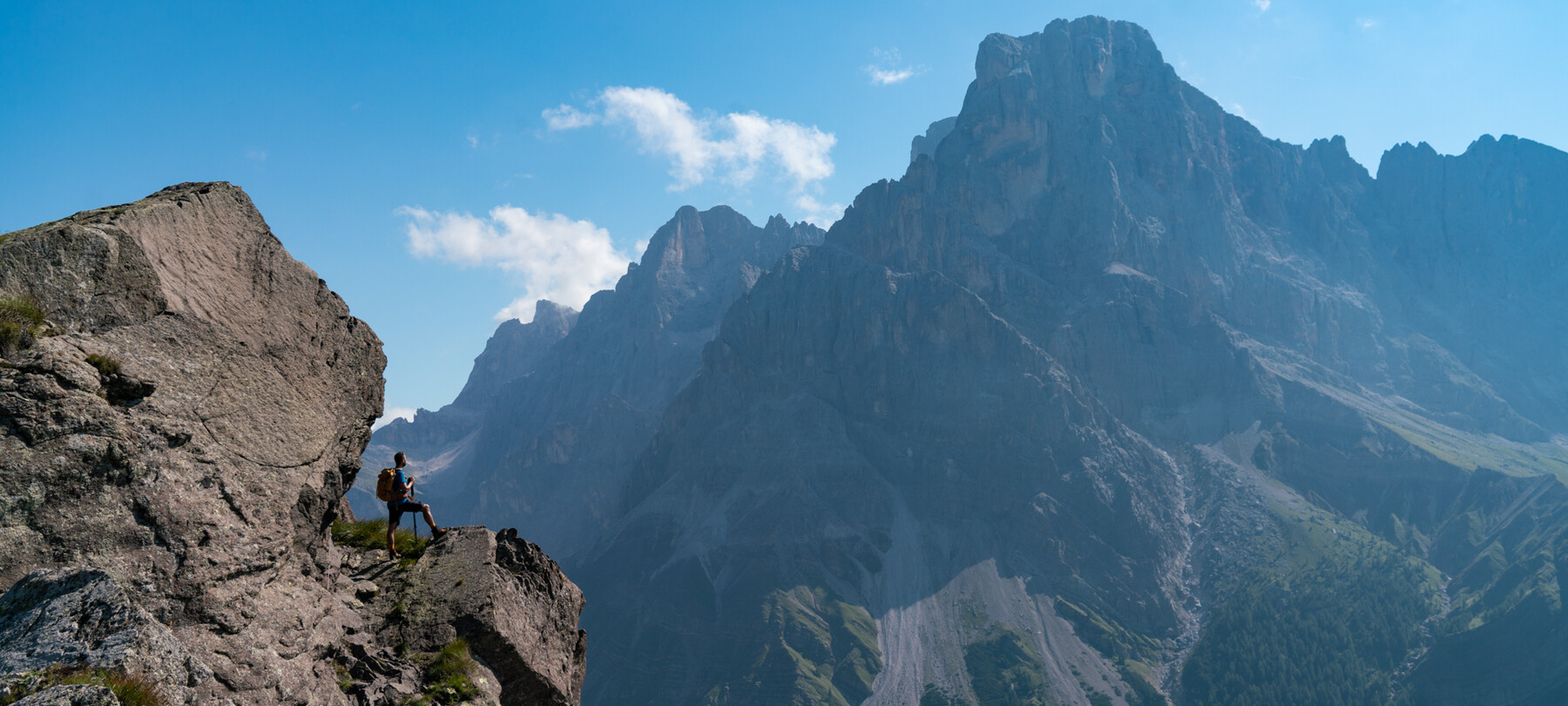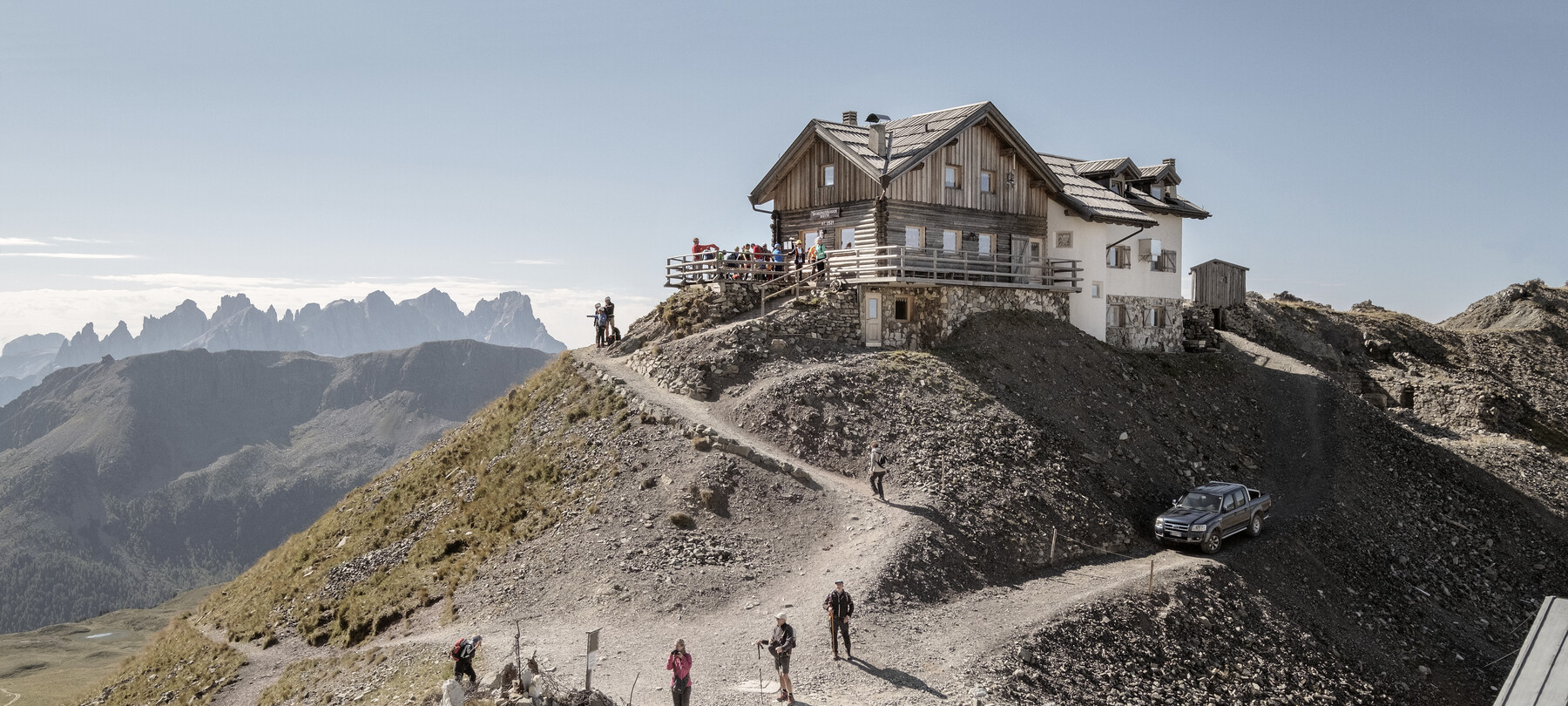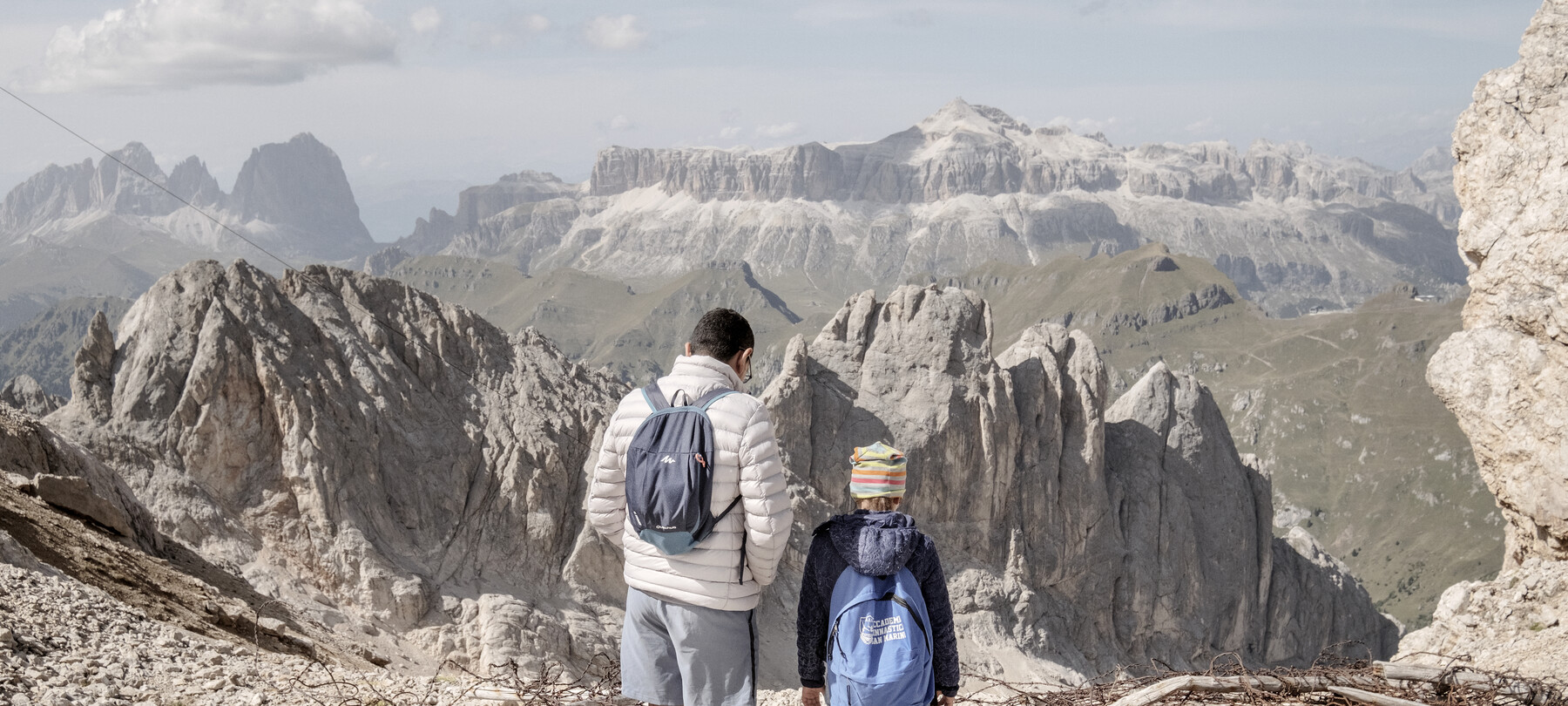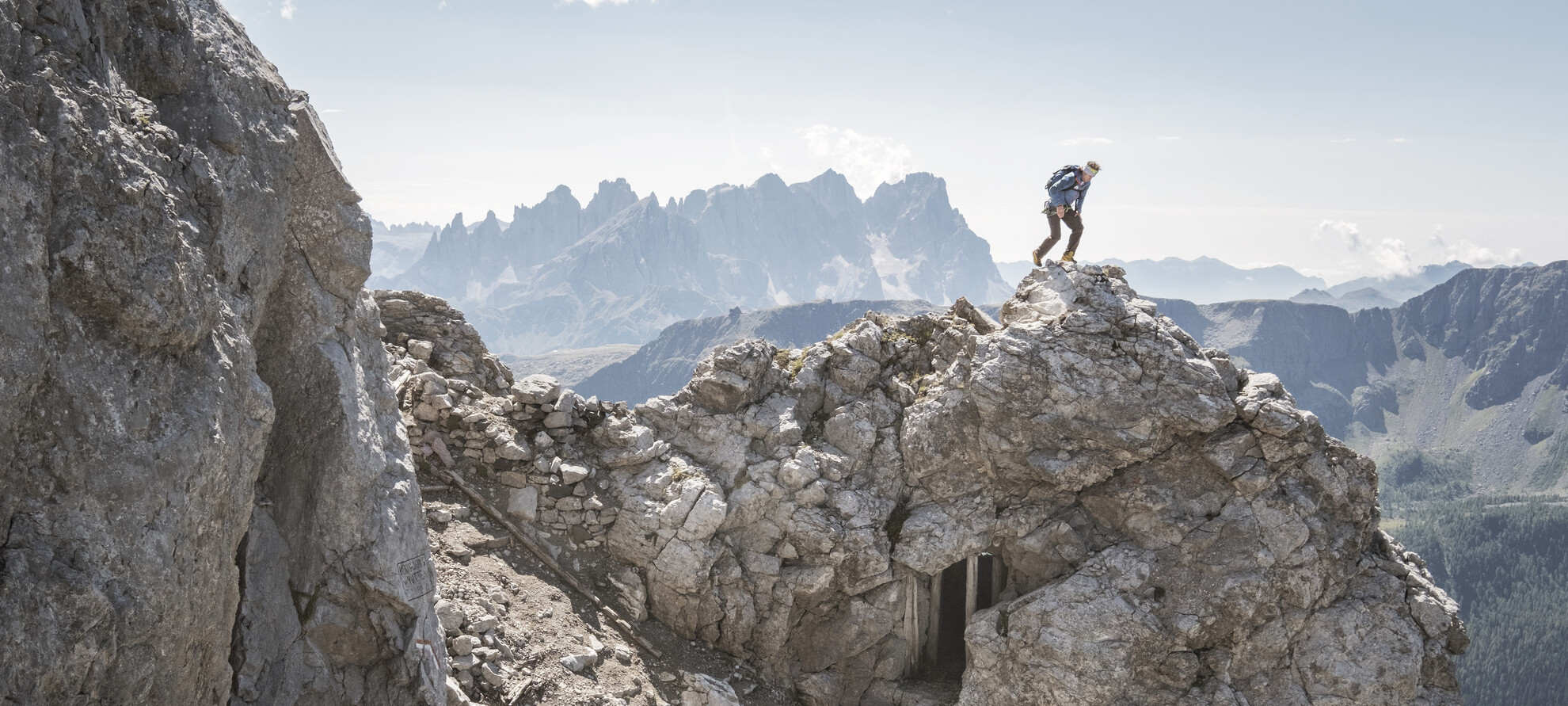The Dolomites: the seventh section of the Path of Peace
From Passo Rolle continue to reach the foot of the Marmolada, the Queen of the Dolomites.
The seventh and final section of the Path of Peace, consisting of 3 stages and just under 50 km long, will take you to the end of this incredible adventure.
The first stage is not overly demanding and leads from Passo Rolle to the Foresta dei Violini di Paneveggio, where you can walk among the imposing spruce trees known throughout the world as a source of prized wood used by master luthiers to make violins. The second stage, which is longer and has a more demanding altitude difference, reaches the iconic Rifugio Passo alle Selle. If you have time and energy, you can even climb the “Bepi Zac” protected path: beginning just above the hut on the Costabella ridge, this route is of great historical interest and passes several military posts and remains of trenches dating to the First World War. Finally, the last stage takes you on an undulating route to the foot of the majestic Marmolada, offering unparalleled delight both visually and physically, whatever the season.
In some cases, the itinerary we propose below deviates slightly from the traditional route of the Path of Peace. Please study the proposed itinerary carefully before setting out!
Before setting off, please read the Caution in the Mountains guidance and contact the rifugios in advance to ensure that they are open and have availability for overnight stays.
The end is in sight! Let’s get underway!

STAGE 1: From Capanna Cervino to Paneveggio
The first part of the stage, up to Passo Colbricon, deviates from the original Path of Peace and is suggested here to break up the otherwise very long previous stage to Passo Rolle.
A fairly long stage with a first part (optional) that undulates along the scenic Cresta della Cavallazza ridge, accompanied by a constant view of the Pale di San Martino. In the second part, you descend through steep and beautiful spruce forest, the Foresta dei Violini di Paneveggio, and then emerge into a vast meadow at the eastern end of Lago di Paneveggio.
This is the Paneveggio - Pale di San Martino Natural Park, a protected area established in 1967 to protect the immense natural heritage enclosed within its 200 square kilometres, between 1100 and 3200 m above sea level. On the way, you pass through one of the park's natural and cultural symbols, the forest of the same name, which for centuries has been home to imposing spruce trees used by Italy's master luthiers to craft violins. A bit of trivia: hailing from Cremona, the famous Antonio Stradivari (1644 - 1737) drew extensively from this forest to build 1116 string instruments, unique and priceless pieces, of which 650 remain today.
If you happen to be passing through here towards the end of August or the beginning of September, you could attend one of the concerts of I Suoni delle Dolomiti, a travelling music festival brings prestigious musicians to perform in the Pale di San Martino each year.

STAGE 2: From Paneveggio to Rifugio Passo alle Selle
A very long stage (with the option to break it at Passo San Pellegrino), with significant differences in altitude, this highly rewarding walk is one of the highlights of the Path of Peace. One by one, you can admire many of the most famous mountain groups in the Dolomites, from the Pale di San Martino to Civetta and Pelmo.
If you happen to smell an intense resinous scent along the way, this is the Prince of the Alps, the Swiss stone pine, which dominates the upper Val di Fassa. Its highly prized wood is held in particular esteem by cabinetmakers, and its essential oils are used to make resins and products for hygiene and personal care.
Another site of notable historical and cultural interest is the Obelisk of Val Miniera, located below Cima Bocche and not far from the Path of Peace. Sculpted from locally quarried porphyry, the monument was erected in September 1917 by the Basilicata Brigade in memory of the fallen soldiers of the Tiber Brigade.
What’s more, if you happen to be walking at dawn or dusk, you may witness a peculiar optical phenomenon, the Enrosadira, a curious and spectacular phenomenon when the rock faces become tinged with pink. The inspiration of countless tales and legends, the Enrosadira is particularly visible on clear days and certainly deserves a moment to be admired in the silence of the mountain.

STAGE 3: From Rifugio Passo alle Selle to Rifugio Contrin
Continuing through the heart of the Dolomites, this stage is relatively short but intense, with two major climbs. Moving between rock faces, valleys, mountain pastures and small alpine lakes, the stage ends at the base of the Marmolada, the Queen of the Dolomites.
These final stages of the Path of Peace reward you with close-up views of the Catinaccio, Pale di San Martino and Marmolada, unique stone cathedrals that were named as UNESCO World Heritage Sites in 2009 to recognise and protect their landscape, cultural, geological and geomorphological value.
The writer and passionate mountaineer Dino Buzzati took inspiration from the Pale plateau for his book “The Tartar Steppe” and wrote: "Are they stones or are they clouds? Are they real or is it a dream?".
Rifugio Torquato Taramelli, which you will come across shortly after the start of this stage, is also worthy of a historical mention: the hut was so named in honour of the great geologist and lecturer from Pavia, at the time an honorary member of SAT (Società degli Alpinisti Tridentini).



